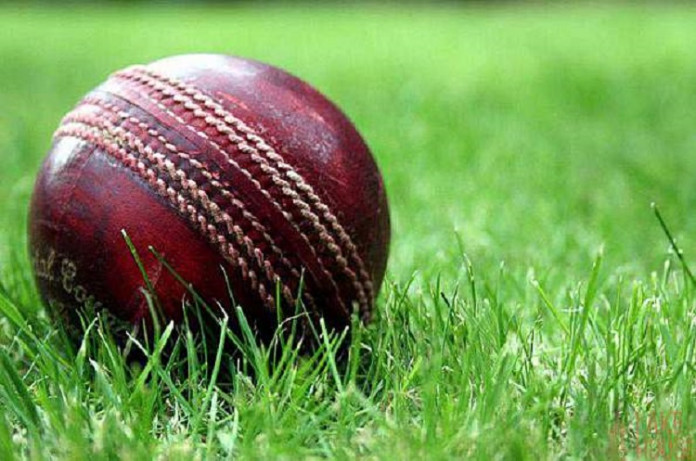Marylebone Cricket Club (MCC) has finalised a new Code of the Laws of Cricket which limits the size of bats, introduces the potential for players to be sent off the field of play due to poor on-field behaviour and recasts the laws in a gender neutral manner.
The new Code, titled Laws of Cricket 2017 Code, will come in to force on October 1 this year and is the first new Code to be drafted since 2000, although there have been six editions of that previous version.
The new Code was approved by a 12-strong group who had the objectives of making the Laws easy to understand and interpret for players, umpires and spectators, to minimise the likelihood of types of misconduct that have been causing players, and particularly umpires, to leave the game and to make the Laws as inclusive as possible to all who might play, umpire or watch cricket.
Until now, the Laws had made all references to the male gender, with a disclaimer saying that, although all such references are to men and boys, they apply equally to women and girls. The new Laws are written in language applying to all persons, regardless of gender. Given the ever-increasing popularity of the women’s game and the growth in participation among girls, this was seen as an important and necessary step for the MCC to take.
The Laws have been drafted in a language applying to all persons, regardless of gender. The new Code includes an increased use of generic nouns like ‘elder’ and ‘bowler’ and uses ‘he/she’ when required, together with a broadened disclaimer covering all genders. The term ‘batsman’ remains, however.
Within the Laws themselves, Law Five has been amended and places limits on the thickness and depth of bats which is in part a reaction to the increased scoring rates in limited-overs cricket and the desire to redress the balance between bat and ball. The maximum dimensions will be 108mm in width (unchanged), 67mm in depth with 40mm edges although whether this has the desired effect in an era of flat pitches and short boundaries remains to be seen.
One of the two new Laws included, relates to player misconduct which has been a growing issue within the game at all levels over recent years. MCC’s summary document says: “It is widely accepted that there is a need both to provide the umpires with appropriate on-field sanctions to deal with deteriorating levels of behaviour, not just to report such matters, and that there should be different levels of sanction leading to sending off for acts of violence.”
Law 42 introduces four levels of offences with different levels of punishment depending on the seriousness of misconduct. They include sanctions such as warnings, five-run penalties and removing a player for a part of the innings or the rest of the match. While targeted at all levels of the game, how this will be implemented practically in the recreational game when players often fulfill umpiring duties themselves remains to be seen.
After a number of high profile ‘mankad’ instances in recent years, including Jos Buttler being run out against Sri Lanka in 2014 whilst backing up at the non-striking end, Law 41.16 has been amended to extend the point at which the run-out of the non-striker can be attempted to the instant at which the bowler would be expected to deliver the ball. This will have the effect of keeping the non-striker in his/her ground for longer.
MCC have also amended the title of this Law to make it clear that the onus is on the non-striker to remain in his/her ground. The summary document says: “It is often the bowler who is criticised for attempting such a run out but it is the batsman who is attempting to gain an advantage. The message to the non-striker is very clear – if you do not want to risk being run out, stay within your ground until the bowler has released the ball.”
In all, there remain 42 Laws with two previous items being deleted and two new Laws being added. One of those which has been removed is the ‘Handled the ball’ Law which will be included within the Obstructing the field dismissal. The batsman will still be dismissed should they handle the ball but they will be given out as obstructing the field which means there will be nine rather than ten modes of dismissals in total. The other Law removed is that of Lost ball which is covered under Dead Ball.
Other Laws have been amended including allowing substitutes to keep wicket with the consent of the umpires, tethering the bails to the stumps to help prevent injuries like the one suffered by South Africa’s Mark Boucher in 2012 who was partially blinded by a flying bail, an event which ended his career, and the prevention of batsmen taking their stance in the protected area of the pitch.
Summary of the significant changes:
The new Code of Laws is written in language applying to all persons, regardless of gender. The new Code includes an increased use of generic nouns like ‘ elder’ and ‘bowler’ and uses ‘he/she’ when required, together with a broadened disclaimer covering all genders. The term ‘batsman’ remains, however.
The Handled the ball Law has been deleted, with its contents merged into Obstructing the field, reducing the list of dismissals from ten to nine. This will have no effect on whether a batsman is dismissed; rather, it is just the method of dismissal that might be changed.
The Lost ball Law has been deleted and is now covered under Dead ball.
The old Law 2 has been divided into two separate Laws, relating to the batsmen (Law 25) and the elders (Law 24). These Laws have changed the concept of Penalty time, which starts to accrue immediately when a player leaves the field and which will also now affect when the player may bat.
Law 5 (The Bat) places limits on the thickness of the edges and the overall depth of the bat. The maximum dimensions will be 108mm in width (unchanged), 67mm in depth with 40mm edges.
Law 8.4 has been changed, to help prevent injuries, to allow specially designed mechanisms which tether the bails to the stumps, thereby restricting the distance that they can fly off the stumps but without limiting their ability to be dislodged.
Law 24 (Fielders’ absence; substitutes) now allows a substitute to keep wicket, with the consent of the umpires.
Law 30 (Batsman out of his/her ground) has been amended to give protection to a running or diving batsman whose bat bounces up after having been grounded beyond the popping crease.
Law 41.8 now covers the bowling of deliberate front foot No balls, which will result in the bowler being suspended from bowling.
Law 41.15 now prevents the batsman from taking stance in a position where he/she will inevitably encroach on the protected area.
Law 41.16 has changed so that the non-striker risks being Run out if he/she leaves his/her ground before the bowler would normally be expected to release the ball.
Law 42 (Player Conduct) is a new Law which gives an in-match consequence for poor on-field behaviour including, for the most serious offences, temporary or permanent removal from the field of play.


















